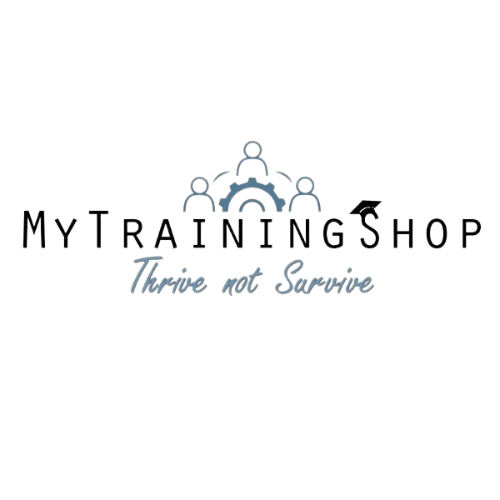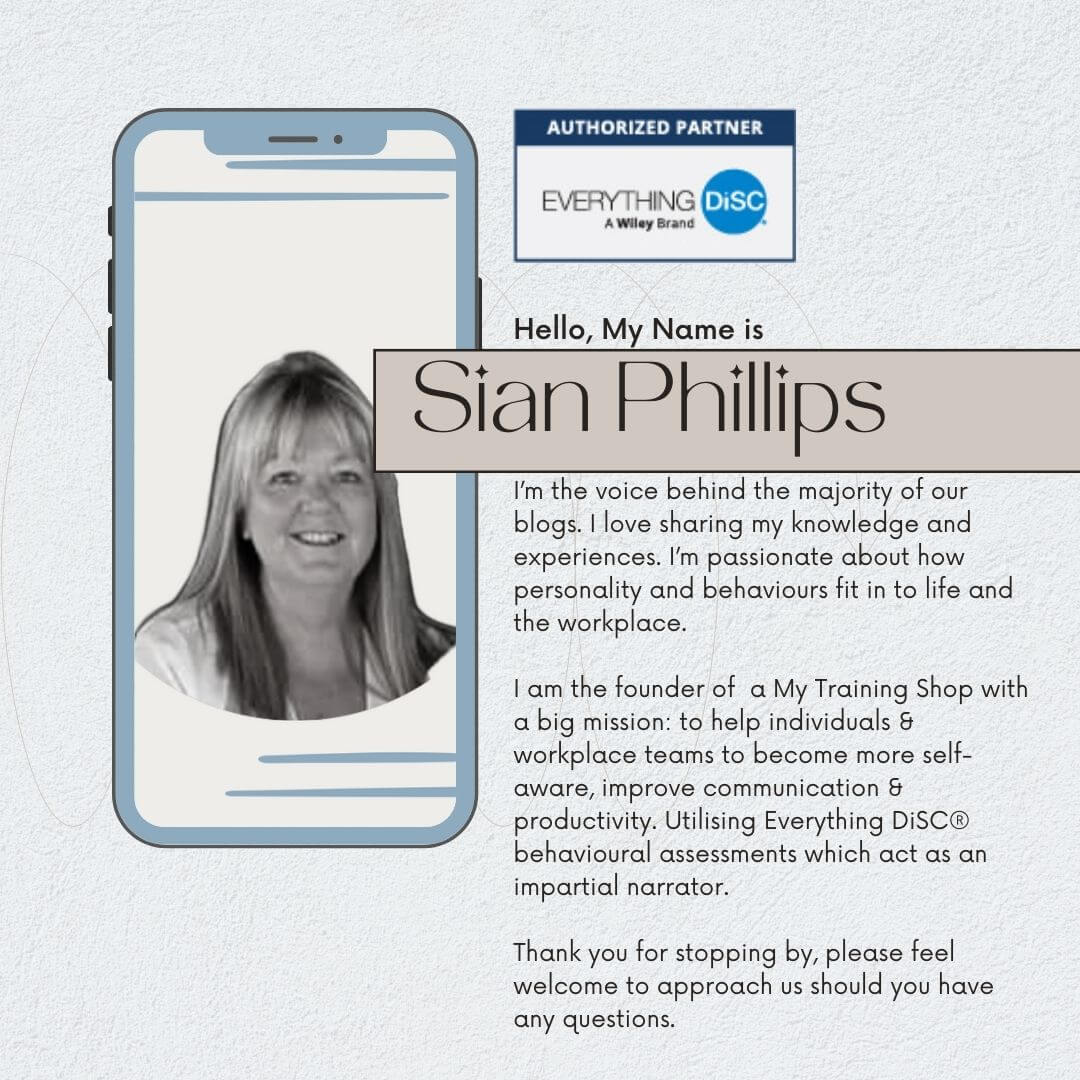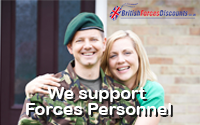Building Stronger Relationships Through Effective Communication.
If you want to build deeper relationships, there is only one way! and that is to focus on improving your Interpersonal skills. Effective Communication is not just about listening and talking to others it can help you express your thoughts and feelings. In this article, I share my experiences and explore both ineffective and productive communication techniques so you can start building stronger relationships today.

Back in the day, face-to-face communication was the main option available to me. Throughout my various careers, deep communication skills have been crucial. Regardless of positions held which in my case were sales, marketing, tutoring, management, leadership, business, my work as a volunteer community first responder and indeed my current work as a listener for the Samaritans. My learning in counselling and coaching further helped structure my listening and questioning abilities.
Nowadays, I often opt for email or messaging because of speed, but I've always been a good listener. I value this skill and try to pause before responding to emails, preferring to talk to the person directly.
I'm keen to share what I've learned about meaningful communication and the potential pitfalls of not employing it.
Communication Skills Improvement
Would you say that you know how to communicate well in your everyday life? Do you consider yourself a good communicator? A person who communicates well usually displays the following characteristics:
- You know how to pay attention.(active listening)
- You demonstrate that they understand the situation
- You pay attention to the person who is speaking
- You look directly into the eyes of this person (appropriate eye contact)
- You observe and monitor body language including facial and hand gestures

Developing your communication skills is like learning a new language. It opens up a whole new world of opportunities and connections, allowing you to effectively communicate with people from different backgrounds and cultures.
Definition of communication
Consists of sending messages which involve speaking, listening, writing and understanding. Requiring the participation of at least two individuals.
The act of Communication involves speaking, listening, writing, non-verbal cues and understanding the person talking. Good communication skills are crucial in all areas of life. We communicate constantly through messaging, emailing, talking, and listening. To summarise, it involves the transmission and reception of messages to convey meaning and understanding.
It is extremely important to have good Interpersonal skills in all areas of your life. When you think about it, we communicate at almost every opportunity. Whether it be by sending a message, writing an email or posting on social media, the latter, of course, can have long-lasting consequences.

When not delivered effectively it can lead to unresolved issues and difficulties, ultimately personal relations can brake down.
Poor workplace communication has serious implications by impacting productivity, morale, and organisational growth. It can lead to confusion, misunderstandings, and conflicts between employees and employers, creating a tense work environment. Additionally, it causes a lack of predictability and stability, decreasing job satisfaction and morale among employees. In turn, impacting productivity and efficiency, in turn stress and conflict increases.
10 Common pitfalls associated with ineffective communication in the workplace:
- Misunderstandings
- Conflict and Tension
- Reduced Productivity
- Wasted Time and Resources
- Decreased Morale
- Missed Opportunities
- Damaged Relationships
- Poor Decision-Making
- Ineffective Leadership
- Legal and Compliance Issues

Definition of communicating effectively
In short, communicating effectively involves the clear, concise, and purposeful exchange of information between individuals or groups, resulting in a mutual understanding. It encompasses the use of verbal and nonverbal cues, active listening, and empathy to convey messages accurately and achieve the intended goals while fostering positive relationships.
Achieving a healthier way of communicating involves numerous and differing aspects and skills. In my own experience, I have found that keeping things straightforward has been beneficial towards my day-to-day interactions, hence I have narrowed it down to 5 factors as follows:
5 factors of effective communication

1) Clarity:
Ensure your message is clear and easy to understand. Be authentic, avoid any confusion and use concise language to express your thoughts. Take into account the knowledge and personality style of the person/people when delivering your message. In the written word, organise your information and create a logical and coherent flow. Utilise headings, bullet points, or other formatting techniques to enhance clarity.
2) Active Listening:
To give someone your full attention, actively listen to them and avoid distractions. Show that you're genuinely interested in what they're saying. Provide feedback by summarising or paraphrasing (not repeating their words) what they've communicated, as this demonstrates understanding and encourages further conversation.
3) Empathy and Body Language
Recognise and understand the emotions of others. Demonstrate empathy (not sympathy) by acknowledging their feelings and expressing understanding. Pay attention to the emotional tone of the conversation. Know their behavioural style and their preferred communicative style.
Definition of nonverbal communication
The transmission of messages or information without the use of words.
Nonverbal language refers to the transmission of messages or information without the use of words. Complements verbal communication and can convey emotions, attitudes, and intentions. Using open body language to convey empathy involves the use of facial expressions, eye contact, body language, gestures, posture, and other nonverbal cues and can include appropriate touch. Use positive facial expressions and eye contact (not staring)
4) Adaptability:
When communicating, where possible, adapt your style to match the other person's preferences and needs. Take into account their cultural background, personality type, and communication preferences. Stay flexible in your approach. Adjust your responses based on the context and feedback you receive.
5) Feedback:
Provide feedback that is specific, timely, and constructive to ensure it is helpful. Positive reinforcement and guidance for improvement are important for healthy communications. Create an open dialogue and empower individuals to the point that they feel comfortable reciprocating. Be open to receiving feedback yourself to encourage open communication
The 2/1 Communication Secret to Becoming More Charming
The word "charming" has various meanings to different individuals. It is often associated with charisma. When someone is described as charming, they are considered desirable, delightful, pleasant, and even magnetic.

Sometimes it's hard to pinpoint what attracts you to someone. You just know that you feel good when you're with them and enjoy their company.
Learning how to be charming can benefit your career and relationships. Socially graceful people use charm to make a positive impression, even with those they don't like or respect. If you want to be more likeable, start with one simple thing: ask questions to help give off a friendly and engaging vibe.
Questioning Techniques
When opening a conversation, it is helpful to use a why-what-how type of questioning technique. This shows that you are genuinely interested and focused on the topic. It also validates the other person's interest and helps to keep the conversation going.

Open Questioning Examples
When in a position of leader, it was essential for me to foster meaningful discussions, encourage critical thinking, and gain insights from team members.
Examples include: What do you envision as the long-term goals for the team? What suggestions do you have for improving our current processes? In your opinion, what strategies would be effective in addressing the challenges we're facing? What skills or knowledge areas do you feel you would like to develop further? What steps can we take to ensure everyone's voice is heard during team discussions? What opportunities do you see in the current market trends, and how can we capitalise on them? How can we enhance the customer experience in our products/services?
Open questions are designed to encourage individuals to express their opinions, share experiences, and provide more detailed information. They are often used in interviews, discussions, or situations where in-depth responses are desired. In my role at the Samaritans, the use of open questions is essential from the start.

More open question examples
- What are your thoughts on the current state of …….?
- How do you feel about [a particular situation]?
- Can you describe your experience with ……..?
- What factors do you consider when making decisions about ………?
- In what ways do you think we could improve……….?
- How would you approach [a specific challenge or problem]?
- What goals do you have for [a certain aspect of your life] in the next year?
- What is your perspective on the impact of [a current event or trend]?
- Can you share your insights into ………?
- How do you envision the future of…………?

Closed Questions
Closed questioning is used to elicit an answer requiring a simple yes, no, or one-word response.
Closed questions often begin with how or what. Closed questions are most effectively used when there is a need to gather specific information, such as someone's role or how often they drive to work, what time they start or finish work. closed questions are useful in crisis intervention to gather accurate information as swiftly as possible. As a community first responder, in the early stages of the response, I would often closed questioning to gain quick responses. Questions like:
- When did your symptoms start?
- What time did you start feeling unwell?
- What was your last blood pressure reading?
- Where were you when you fell?
- If more time allows, switch to open questioning. Some examples would be asking what you were doing before you felt unwell. what usually happens before your blood sugar spikes? how often do you go to the hospital? Why you think you fell?

Closed Questions Examples
- Are your contact details the same as before?
- Is that your final answer?
- When are you planning on resigning?
- Have you attended the training session?
- Did you find the training session helpful?
- Are you interested in option A or option B?
- Will you be available in the morning or the afternoon?
- Did you mean Y when you said X ?
- Is this the final version of the document?
- Did you encounter any issues during the process?
- Was the project completed on time?
- Did you receive the email I sent yesterday?
- Is this the right contact information for you?
- How many units were sold last month?
- Have you met your sales target?
- Did the delivery arrive on time?
How Many Ears Do You Have? How Many Mouths?
An old one, I know! but my advice is to remind yourself regularly that we have 2 ears, and they are always open. You only have 1 mouth, and it can readily close. Listening should be done more often than talking; a charming person is an excellent listener. They ask questions, offer eye contact and use facial expressions to show interest. They actively listen and can repeat (paraphrase and reflect) what has been told to them. These are attractive and charming qualities.

Being Charming Is All About Listening
Say the right things and be genuine. Caution; people can tell if you're being false. Be present with the person you're interacting with and acknowledge their experience. Reflect on what they are saying, listen deeply and repeat back to them (as above). Demonstrate that you're truly listening and understanding their emotions. Remember, you have two ears, so listen more than you talk to prove that you are engaged.
Admittedly, it can often be easier (and quicker) to acknowledge someone by email, text or messaging. However, becoming an active listener is usually the first step to improving communication skills overall. Once mastered, this skill can enhance your writing and speaking abilities. Understanding potential issues fully will make it easier to respond to someone with depth and understanding.
Improving these skills can have a positive impact on your own self-confidence and self-esteem.

Actions:
- Pay attention and then ask questions (careful use of open or closed techniques as above), especially if you are unsure of a certain point.
- Make a judgment if it's best to show the person sympathy or empathy. Demonstrate understanding, even if your own feelings are a little different.
- Don’t interrupt the person when they are speaking. Let them finish talking before taking your turn, and if necessary, present your point of view.
- Do not judge people. Everyone is entitled to their point of view on any subject. This essentially means that there is no one right or one wrong viewpoint on anything.
Positive and supportive relationships in mental health
Effective communication methods require practice and attention as outlined above. Each person is unique, so these pointers may need to be approached differently based on individual preferences and circumstances. Consider the following key factors.
- Demonstrate Empathy and Compassion: Be non-judgmental towards their experiences, show understanding and compassion whilst factoring in their feelings.
- Active Listening: Practice reflective listening techniques, see ‘5 factors of effective communication’
- Use Open-ended Questions: Avoid one-word answers. See’ Open and Closed Questions’
- Respect Boundaries: Avoid the use of stigmatising language and don’t pressure them to share something they are not ready to divulge. Do not make assumptions about their circumstances, experience or their condition.
- Validate Feelings: Be calm and communicate your willingness to help (do not make the assumption that they know this). Inform them that they are not alone. Be patient and avoid conflict. Consider their personality style. Offer ongoing support and reassurance that they are not alone.. Make it clear that they are being heard see ‘Being Charming Is All About Listening’
- Offer Practical Help: Be prepared to recognise your own limitations, encourage them to speak to a professional and/or to signpost them to a specialist organisation. Respect their privacy and confidentiality. Avoid discussing their mental health with others without their explicit consent. Consider educating yourself about their particular health condition. Follow up! Check in on them from time to time or as and when promised.
Effective Communication: Learning from well-known Leaders
Communication is a crucial aspect of leadership. Great leaders are not only skilled in their field, but they are also great orators and inspiring speakers. Whether we like or dislike the following leaders, they have the ability to effectively communicate their ideas, inspire their team, and connect with their audience. In this article, we will look at some examples of leaders with strong communication abilities and what we can learn from them.

Barack Obama, the 44th President of the United States, is recognised for his impactful and inspiring speeches. He possesses the skill to engage his audience and make them feel included in a larger cause. An important aspect of Obama's communication style is his utilisation of storytelling. He frequently incorporates personal anecdotes to demonstrate his arguments and make them relatable to his listeners. This enables him to establish a profound connection with individuals and leave a lasting impression.
Oprah Winfrey is a media mogul and philanthropist known for her exceptional way of communicating. She has the ability to engage and connect with her audience through her talk show and motivational speeches. One of the key elements of Oprah's style of communication is her authenticity, which makes her audience trust and believe in her message. This teaches leaders the importance of being genuine and relatable to build strong connections and inspire their team.
Winston Churchill, a former Prime Minister here in the United Kingdom, is considered one of the greatest, certainly memorable in our history. His presence was commanding with a powerful voice that captivated his audience. Interestingly, a key element of Churchill's communication style was repetition. He often repeated key phrases or ideas to emphasise their importance and make them memorable. This technique is effective for leaders delivering important messages or rallying their team.
Melinda Gates, co-founder of the Bill and Melinda Gates Foundation. Melinda leads, inspires and motivates through communication. She communicates complex ideas in a simple and relatable way. Melinda portrays empathy via her communication style. She appears to understand her audience's perspective and consequently connects with them, creating a meaningful impact.
Leaders need strong communication skills to be successful. We can learn from the best leaders to improve our own skills. They have shown us that effective conversations can inspire, motivate, and bring people together. Techniques like storytelling, authenticity, repetition, and empathy can be incorporated into our own style.

If You Want to Be Better at Starting Conversations, Take a Break from social media
Social media helps people connect and reconnect. People who haven't seen each other since high school, college or university can now chat on Facebook. However, there is a downside to this type of connection. It may lead to more isolation and difficulty in face-to-face interactions. Meeting in person is irreplaceable. Emoticons/emojis can't compare to seeing someone's smiling face. Engaging in social media limits availability for one-on-one conversations.
The appeal of social media is understandable. It allows instant conversations with long-lost friends. We can share pictures, listen to music, and stay updated on each other's lives. Depending on how its used, social media can provide short-term emotional support during struggles.

Unplug and find true connection again
The internet has decreased our level of connection. Notice how many people are using their smart devices when you're around a group of people. There's no need to start a conversation because they're already engaged with someone online. If you try to talk to them, they might even get annoyed because you interrupted their online conversation. Before smart devices, people used to chat with each other all the time, even in public places like trains, subways, and bus stops.
Why not break the ice and make new connections
To stand out, strike up a conversation with a stranger. You could talk about their smart device ( oh, the irony!) . but what a great conversation starter. Ask about the device they have. Even if you don't want one, this will get them talking. Social media is here to stay. But it's good to connect face-to-face. This way you can quickly decide if the person is worth talking to. You can't do this on social media!,
Elevate your communication game with Everything DiSC®
Now is an ideal time to discover your Everything DiSC® style and perhaps the styles of your team or family members. This will help increase self-awareness and provide a strong foundation for understanding others and improving your communication skills.
Learning and Development Professionals and Organisations who want to deliver Everything DiSC: visit this page
More related reading:
How to unlock success with Everything DiSC®
How to Improve Your Active Listening Skills in 5 Easy Steps

If you prefer any of the following downloads in the style of a flip eBook, make a request. under the brief message setting. Alternatively, send us an email at: help@mytrainingshop.co.uk
Take your DiSC assessment profile
Improve communication skills pdf (blog) FREE download
Bonus! How to speak up - FREE download
Speak out in a crowd PDF FREE Download

If you are a trainer or coach and wish to deliver DiSC as part of your learning and development programmes , Drop us a line here
FAQ’s
How can effective communication help build stronger relationships?
Helps build stronger relationships by fostering understanding, trust, and connection. It allows individuals to express needs, resolve conflicts, and build a foundation for strong, healthy relationships.
What are some key strategies for improving communication in a relationship?
Key strategies for improving relations include active listening, expressing feelings openly, using "I" statements, avoiding blame, and being mindful of nonverbal cues to enhance overall communication.
How does active listening contribute to building stronger relationships?
Active listening contributes to building stronger relationships by demonstrating genuine interest, understanding, and respect. It encourages open dialogue, minimizes misunderstandings, and creates a foundation of trust in relationships.
What role does empathy play in effective communication?
Empathy plays a crucial role by fostering emotional connection through understanding and sharing the feelings of others. It promotes a supportive environment, encourages validation, and strengthens the emotional bond in communication.
© Sian














